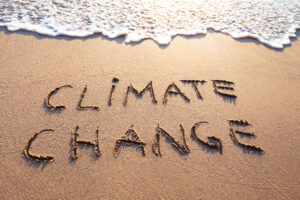 According to Tim Judge, the SVP and Head of Modeling and also the Chief Climate Officer for Fannie Mae, Storms, floods, fires, and heat waves are getting stronger and more frequent. They are making the human cost of our warming world all too real, especially for America's homeowners and renters.
According to Tim Judge, the SVP and Head of Modeling and also the Chief Climate Officer for Fannie Mae, Storms, floods, fires, and heat waves are getting stronger and more frequent. They are making the human cost of our warming world all too real, especially for America's homeowners and renters.
During the 2023 calendar year, the country weathered 25 confirmed natural disasters (the average is 21), but looking over a longer period of time back to the 1980s, the country experienced only 3 natural disasters per year. These disasters have touched every state and many inland areas not generally considered at high risk. Those in low-income communities are often the most vulnerable.
Climate change has now permeated every level of housing—not just the property in question—but lenders, investors, property owners, and insurers too. Already, there is concern in certain communities that climate risk may affect future insurance rates and coverage, which is already happening in places like Florida, where some insurers have taken such heavy losses that they are pulling out of that market.
The human faces of our more extreme weather are America's homeowners and renters. They are on the front lines—they are also essential to meeting the challenges we face.
As a leading source of mortgage credit in the country, Fannie Mae is driving to understand climate change's impacts on housing, raise awareness about the risks, and encourage common sense actions to mitigate those risks.
Recently, they surveyed nearly 4,000 homeowners and renters to measure their awareness of one of the costliest and most common risks—flooding. In general, awareness of flood risk is low—but the upside is that consumers want more information, and many are willing to take concrete actions to protect themselves.
These are a few ways Fannie Mae has proposed to start making their homes and families safer in light of a more dangerous future due to climate change:
- Understand your home's risk to flood and wildfires. In our survey, only 37% of those living in high-risk flood zones designated by the Federal Emergency Management Administration (FEMA) were aware of that fact. For mid-risk zones—such as parts of Las Vegas and New York City that experienced severe flooding in the past several months—only 5% were aware. Yet, 51% say that a home's flood history is critical to their purchasing decision. To better understand your flood risk, go to FEMA's flood map tool and FloodSmart website to learn what your flood zone means. No tool is perfect, and where it can rain, it can flood. So, when buying, be sure to ask if there's been previous flooding. Remember, too, that FEMA's maps only cover flood risk—for wildfires, you can go to wildfirerisk.org.
- Know if you're insured against floods and wildfires. Most homeowner policies don't cover flood. If yours doesn't, you can learn about FEMA's National Flood Insurance Program here. Also, in some high-risk areas, wildfire coverage must be bought separately.
- Look for cost-effective ways to make your home and community more resilient. In our survey, 39% are taking steps to address flood risk. Almost two-thirds are willing to spend at least $5,000 to avoid $100,000 in flood damage. Individual action is key—right now, only about 35% of our counties, cities, and towns have modern building codes that factor in today's climate dangers. Simple measures such as cleaning and positioning gutters and downspouts and keeping flammable material away from the house can go a long way. Again, FEMA has actionable, reliable information on protecting against both floods and wildfires.
- Be prepared should disaster strike. Building an emergency kit ahead of time can save your life. Ready.gov can tell you how. Know too where to reach out for help. For example, you can call Fannie Mae's help network (1-855-HERE2HELP) to get in touch with HUD-approved housing counselors who can connect you with your mortgage or insurance company, as well as other recovery resources.
- Be part of the solution. Reducing energy use can save you money and help prevent future warming. The U.S. Department of Energy estimates that fixing drafts and leaks and updating heating and cooling systems could save the average American up to $400 annually. Start with an energy audit and take advantage of the many online resources for energy-saving improvements.
Click here to view Fannie Mae’s Perspectives Blog Post in its entirety.

 DSNews The homepage of the servicing industry
DSNews The homepage of the servicing industry









